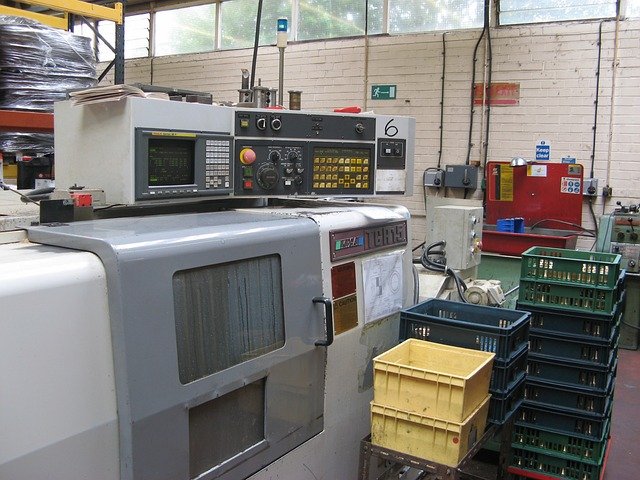Precision Parts Pooling: Optimizing Inventory Through Collaborative Networks
Collaborative inventory management reshapes industrial efficiency. Precision Parts Pooling emerges as a groundbreaking strategy, allowing manufacturers to share specialized components across a network. This approach reduces individual inventory costs, enhances supply chain resilience, and promotes resource optimization. By leveraging shared resources, companies can maintain production continuity while minimizing capital tied up in rarely used parts.

Initially, PPP faced skepticism due to concerns about intellectual property and competitive advantage. However, as global supply chain disruptions became more frequent, the benefits of collaborative inventory management became increasingly apparent. Early adopters, primarily in the aerospace and automotive sectors, demonstrated that PPP could significantly reduce costs without compromising operational efficiency.
Mechanics of Precision Parts Pooling
At its core, PPP operates on a simple principle: multiple companies within an industry or region agree to share a common inventory of specialized parts. This shared pool is typically managed by a third-party logistics provider or a consortium formed by the participating companies. Each participant contributes to the pool based on their historical usage and projected needs.
When a company requires a specific part, they can quickly access it from the shared inventory. This system ensures that rarely used but critical components are available when needed, without each company bearing the full cost of stocking these items individually. The pool is replenished based on collective usage patterns, optimizing inventory levels across the network.
Benefits Beyond Cost Savings
While reduced inventory costs are a primary benefit of PPP, the advantages extend far beyond financial savings. Participants in PPP networks often experience improved supply chain resilience. By pooling resources, companies can better withstand supply disruptions that might otherwise halt production.
Moreover, PPP fosters collaboration and knowledge sharing among industry peers. Participants often find opportunities for joint problem-solving and innovation, leading to industry-wide improvements in efficiency and quality. This collaborative environment can be particularly beneficial for smaller manufacturers, allowing them to access resources typically available only to larger corporations.
Technological Enablers of PPP
The success of Precision Parts Pooling relies heavily on advanced technology platforms. Sophisticated inventory management systems, powered by artificial intelligence and machine learning algorithms, play a crucial role in optimizing the shared inventory. These systems predict demand patterns, suggest optimal stocking levels, and facilitate seamless transactions among pool participants.
Blockchain technology is increasingly being explored to enhance the transparency and security of PPP networks. By providing an immutable record of transactions and inventory movements, blockchain can build trust among participants and streamline auditing processes. Additionally, Internet of Things (IoT) devices are employed to track the location and condition of shared parts in real-time, ensuring efficient utilization of the pooled resources.
Challenges and Considerations
Despite its benefits, implementing a Precision Parts Pooling system comes with challenges. Establishing trust among competitors is often the first hurdle. Clear agreements on inventory contribution, usage rights, and cost-sharing are essential to build and maintain this trust.
Standardization of parts and processes across participating companies can also be a significant challenge. Different manufacturing processes or quality standards may require careful negotiation and alignment. Additionally, companies must carefully consider the balance between the benefits of pooling and the potential loss of competitive advantage in certain areas.
Regulatory compliance, especially in industries with strict quality control requirements, presents another layer of complexity. Participants must ensure that the pooled parts meet all relevant standards and that proper documentation is maintained throughout the sharing process.
Strategic Implementation Tips for PPP Success
• Conduct a thorough analysis of your inventory to identify ideal candidates for pooling
• Start with a small pilot program to test the concept before full-scale implementation
• Invest in robust inventory management technology to ensure efficient pool operations
• Develop clear governance structures and dispute resolution mechanisms
• Regularly review and adjust pool composition based on changing industry needs
• Consider geographic proximity when selecting pool partners to minimize logistics costs
• Implement stringent quality control measures to maintain part reliability across the network
In conclusion, Precision Parts Pooling represents a paradigm shift in industrial inventory management. By fostering collaboration and leveraging advanced technologies, PPP enables manufacturers to optimize their operations, reduce costs, and enhance resilience. As industries continue to evolve in an increasingly interconnected world, strategies like PPP will become essential tools for maintaining competitiveness and driving innovation. The success of PPP initiatives will largely depend on the willingness of companies to embrace collaborative models and invest in the necessary technological infrastructure.





